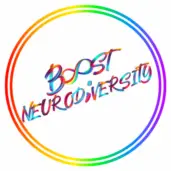It seems we can’t find what you’re looking for. Perhaps searching can help.
ADHD (Attention deficit hyperactivity disorder)
Welcome to the ADHD section of our blog – a dedicated space to embrace and promote neurodiversity, focusing specifically on Attention Deficit Hyperactivity Disorder. Here, we view ADHD not as a deficiency, but as a different type of brain wiring that fosters unique perspectives, strengths, and skills. Recognizing the existence of ADHD in its diverse forms as an integral part of human diversity is our prime concern.
We understand that every mind is unique, offering novel viewpoints and distinctive ways of interacting with the world around us. Living with ADHD comes with its own set of challenges, but also, exciting possibilities. In this space, we focus on providing resources, guidance, and support for those living with ADHD, their loved ones, educators, and allies. Together, we foster a deeper understanding and appreciation of this remarkable neurotype, advocating for a more accepting, accommodating, and inclusive society for all. Embrace neurodiversity, celebrate the different wiring of ADHD minds, and revel in the extraordinary capacity it holds. After all, variety is the spice of life and neurological diversity is an invaluable addition to this assortment.
Attention deficit hyperactivity disorder (ADHD) is a common neurodevelopmental disorder that affects people of all ages, but typically first appears in childhood. Individuals with ADHD exhibit symptoms of inattention, impulsivity, and hyperactivity that interfere with their daily life. It can lead to difficulty in social relationships, academic achievement, and self-esteem.
Inattention refers to the inability to concentrate and complete tasks, forgetfulness, distractibility, and disorganization. Impulsivity means acting without thinking of the consequences, interrupting others, or taking risks without considering the possible outcomes. Hyperactivity is characterized by an inability to sit still, fidgeting, restlessness, and excessive talking.
ADHD is a complex disorder that is often misunderstood. It is not just about being hyperactive or having trouble focusing, but a combination of several symptoms that vary in severity from person to person. Diagnosis can be made by a medical professional through observation, history taking, and various assessments. Although ADHD cannot be cured, it can be managed through a combination of medication, behavioural therapy, and lifestyle modifications.

